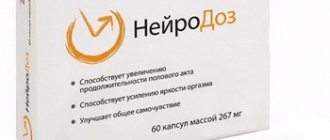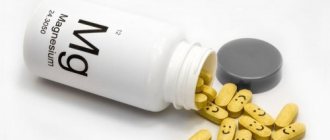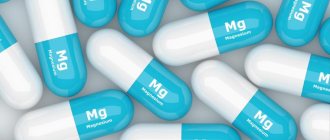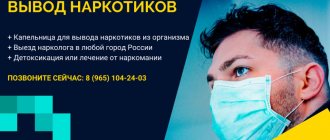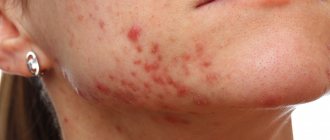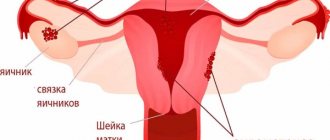What is riboflavin?
Riboflavin is a substance belonging to the prosthetic group of flavin enzymes and is a water-soluble vitamin. The component takes part in most processes that ensure the normal functioning of internal organs and systems.
The ingredient is indispensable for ensuring metabolic processes, strengthening the immune system and forming blood cells. Today on pharmacy shelves you can see the vitamin in various dosage forms. In dry form, the ingredient is poorly soluble in alkaline liquids and alcohol, has a specific aroma and a bright yellow color.
The substance is resistant to acidic environments, reacts negatively to solar radiation, but is subject to rapid recovery.
Composition, release form
The pharmacological agent is available in several dosage forms, but the most popular is the solution for intramuscular administration, packaged in 1 ml ampoules. An individual cardboard box may contain 10 ampoules of solution and detailed instructions for proper use.
The solution has a very bright yellow color; there is no sediment at the bottom of the ampoule. Riboflavin is also available in the form of tablets, pills and drops for oral use. The latter dosage form is quite difficult to find.
Pharmaceutical companies sometimes produce the product in powder form. The presence of several dosage forms does not make the solution and tablets less popular; in most cases, vitamins are used in this form.
The product contains riboflavin in any form. In 1 ml of solution its amount is 10 mg. The tablet product also contains the same dose of the component in the composition; in the dragee, the amount of the substance is reduced.
The solution contains water for injection as an additional ingredient. Tablets and dragees contain talc, starch and some other substances. The therapeutic effect is achieved due to the presence of the main component.
Benefits of vitamin for the human body
Vitamin B2 in ampoules helps to compensate for the deficiency of the ingredient in the human body. The daily need for it for an adult and a child depends on age. The doctor also takes into account the person’s condition and the presence of chronic diseases.
| Patient age | Daily intake of riboflavin |
| Children under 6 months | Such patients receive 0.4 mg of the drug per day. Depending on the condition, this dose may be increased or decreased. |
| Children from 6 to 12 months | The dose of riboflavin does not exceed 0.6 mg. |
| Patients from 1 to 3 years | Children receive 0.9 mg of vitamin per day. |
| Patients from 3 to 8 years | The daily requirement of riboflavin is 1.3 mg. |
| Children from 9 to 14 years old | During the period of intensive growth, girls require 1.7 mg of riboflavin per day; for boys, this dose increases to 1.9 mg. |
| Adults | Adult patients should normally receive 1.7-1.8 mg of riboflavin per day. Typically, men require more of the substance. |
| Pregnant and lactating women | During pregnancy and breastfeeding, the need for vitamins and minerals increases. During pregnancy, you should take at least 2.0 mg of the drug per day; during lactation, this dose increases to 2.2 mg. |
With intense physical and mental stress, the rate of the active substance per day may increase, which is associated with the presence of a risk of exhaustion of the body.
Riboflavin is considered a very important element for the normal functioning of the body. Its benefits for humans are explained by its good absorption and implementation into cells, improving their functioning.
The main beneficial properties of the vitamin:
- Takes part in the process of formation of blood cells, which helps prevent the development of anemia and some other pathologies accompanied by severe disorders.
- Helps to process the main components of food in the body, that is, proteins, fats and carbohydrates. Thanks to this, their rapid and correct distribution occurs and fat deposition is prevented.
- Normalizes metabolic processes, accelerates fat burning, increases endurance and physical strength.
- Promotes oxygen saturation in the blood by increasing the number of red blood cells in it. As a result, patients with pathologies of the heart and blood vessels feel relief.
- Stimulates the production of antibodies to various viruses, which shortens the recovery period and prevents the recurrence of symptoms.
- Helps regulate the growth of the child, promotes the proper development of skeletal muscles and bone tissue. In combination with hormones that are produced in the human body, the substance helps prevent various developmental abnormalities.
- Improves the functioning of the human reproductive system, prevents the development of infertility and some other diseases.
- Regulates the activity of the thyroid gland, prevents hormone imbalance.
- Improves the condition of the skin, hair and nails.
- Helps strengthen the immune system, increases the body's resistance to various viral and colds.
- It prevents pathologies of the visual apparatus, and in the presence of such diseases, it significantly improves the condition of patients and relieves inflammation.
- Helps remove toxins, poisonous substances and waste from the body. The vitamin is especially useful for people who, for one reason or another, are exposed to radiation.
- Improves the condition of the digestive tract, prevents the development of indigestion, flatulence and other disorders.
- Stimulates tissue regeneration in the presence of trophic ulcers, infected wounds and abrasions.
- Prevents hair loss, irritation and peeling of the skin, and the formation of lesions.
The benefit from the product can only be obtained if it enters the body in the required quantity and depending on age.
Riboflavin (vitamin B2)
Riboflavin
(eng.
riboflavin
) or
lactoflavin
-
vitamin B2
.
Basic functions and norms of vitamin B2 intake
According to Methodological Recommendations MP 2.3.1.2432-08 “Norms of physiological needs for energy and nutrients for various groups of the population of the Russian Federation”, approved by Rospotrebnadzor on December 18, 2008, riboflavin in the form of coenzymes is involved in redox reactions, helps to increase the sensitivity of color to the visual analyzer and dark adaptation. Insufficient intake of vitamin B2 is accompanied by impaired condition of the skin, mucous membranes, and impaired light and twilight vision. The average consumption in different countries is from 1.5-7.0 mg/day, in Russia - 1.0-1.3 mg/day. The established level of requirement in different countries is 1.1-2.8 mg/day. The upper acceptable level has not been established. With a vitamin B2 intake of 1.8 mg/day or more, the vast majority of examined individuals had serum riboflavin concentrations within the physiological norm. The specified physiological requirement for adults is 1.8 mg/day. The physiological need for children is 0.4 to 1.8 mg/day. The 2015–2020 Dietary Guidelines for Americans (official publication of the US Department of Health) recommends the following daily intakes of vitamin B2:
- children under 3 years old - 0.5 mg
- children from 4 to 8 years old - 0.6 mg
- children from 9 to 13 years old - 0.9 mg
- girls from 14 to 18 years old - 1 mg
- women 19 years and older - 1.1 mg
- boys and men aged 14 years and older - 1.3 mg
Riboflavin is a chemical substance
The chemical name of riboflavin is 7,8-Dimethyl-10-(D-1-ribityl)isoalloxazine. The gross formula is C17H20N4O6. Yellow-orange crystalline powder of bitter taste, with a weak specific odor. It is highly soluble in water, stable in acidic solutions, but easily destroyed in neutral and alkaline solutions. Riboflavin solution is yellow in color. Riboflavin is very sensitive to visible and UV radiation and relatively easily undergoes reversible reduction, adding hydrogen at the site of double bonds and turning into a colorless leuco form. The property of riboflavin to be easily oxidized and reduced underlies its biological action in cellular metabolism. Products of riboflavin processing in the body color urine bright yellow.
Riboflavin is the international nonproprietary name of the drug
In the ATC, riboflavin is classified in the group “A11 Vitamins”, subgroup “A11HA Other vitamins in pure form”.
Riboflavin code is A11HA04. Pharmacological group “Vitamins and vitamin-like products”. In addition, since 2022, riboflavin has been included in the group “S01 Drugs for the treatment of eye diseases” and has been assigned the code S01XA26.
Indications for use of riboflavin
Riboflavin is indicated for hypo- and vitamin B2 deficiency, hemeralopia, conjunctivitis, keratitis, iritis, corneal ulcers, cataracts, long-term non-healing wounds and ulcers, general nutritional disorders, radiation sickness, asthenia, intestinal dysfunction, hepatitis.
Riboflavin deficiency can develop with a diet low in animal proteins or when taking riboflavin antagonists. Manifestations of deficiency are angular stomatitis, cheilosis, glossitis, seborrheic dermatitis, normochromic normocytic anemia. Riboflavin deficiency usually occurs in conjunction with a deficiency of other water-soluble vitamins. The need for riboflavin increases in patients on hemo- and peritoneal dialysis.
Riboflavin deficiency increases the risk of developing esophageal cancer (Siurala M. et al).
Sources of Riboflavin
Riboflavin is found in almost all animal tissues and plants (in mg per 100 g of product):
- animal liver and kidneys - 3.64-4.66
- yeast - 2.07-4.0
- eggs - 0.80
- almonds - 0.80
- cottage cheese - 0.40-0.50
- buckwheat – 0.24
- milk - 0.13-0.18
- meat - 0.15-0.17
- white bread, pasta - 0.03-0.05
Ribolflavin is found in flaxseed oil.
Free riboflavin is found only in milk. In other products it is found in the form of a mono- or dinucleotide - coenzyme B2.
Riboflavin is also produced by bacteria resident in the human intestine, in particular Escherichia coli.
.
Riboflavin is presented in pharmacies as a single drug (medicine or dietary supplement), and also as one of the components of many vitamin-mineral complexes: Bio-Max, Complivit, Vitrum, Selmevit, Hexavit, Multi-Tabs, Vitamin-mineral complex from A to Zn (“Vitamins for adults”, Monte-vit premium) and others. Riboflavin is also part of a number of complex medications, for example, Cytoflavin (inosine + nicotinamide + riboflavin + succinic acid).
Riboflavin (vitamin B2) has contraindications, side effects and application features; consultation with a specialist is necessary.
Riboflavin - food supplement
Riboflavin, as a food additive, has code E101 and is defined by SanPiN 2.3.2.1293-03 as a food coloring. Food additive E101 can take two forms:
- E101i – riboflavin
- E101ii – sodium salt of riboflavin-5-phosphate
Back to section
Indications for use
Vitamin B2 is prescribed only when necessary to compensate for the deficiency of the ingredient in the body and eliminate complications associated with this condition.
The product in ampoules and other dosage forms has the following indications:
- Conjunctivitis of varying forms and severity. Inflammatory pathologies of the mucous membranes of the eyes are quite severe when there is a deficiency of riboflavin in the body.
- Keratitis in the initial and advanced stages.
- Iron deficiency anemia, accompanied by a sharp decrease in the level of hemoglobin in the blood. The disease cannot be treated with this drug alone, but as part of a complex treatment it enhances the effect of other drugs aimed at treating anemia.
- Hepatitis B, accompanied by severe symptoms and affecting the functioning of the liver. The drug helps alleviate the condition in combination with other medications.
- Eczema, psoriasis and dermatitis in acute and chronic form. Replenishing the deficiency of an important component in the body helps to shorten the period of treatment during exacerbation of diseases and reduce the risk of frequent relapses.
- Inflammatory and other diseases of the digestive tract, accompanied by indigestion, flatulence, bloating and stool disorder.
- Deterioration in the quality of vision, manifested at night. The condition may be temporary or permanent, but using riboflavin in combination with other medications can help improve vision.
- Radiation sickness resulting from exposure to ionizing radiation.
- Stomatitis and glossitis, gingivitis of varying degrees of neglect.
- Formation of cataracts in elderly patients.
- Trophic ulcers, infected wounds, long-term non-healing lesions as a result of circulatory disorders. Similar problems can arise with obliterating endarteritis or progression of diabetes mellitus.
- Increased fatigue, sleep disturbance, weakness. In cases of decreased performance and depression, the remedy is considered quite effective.
- Fungal diseases of the mucous membranes.
The list of indications may increase, since the drug is needed for many conditions.
Riboflavin Mononucleotide (amp. 1% 1ml No. 10)
A country
Russia
The country of production may vary depending on the batch of goods. Please check with the operator for detailed information when confirming your order.
Active substance
Riboflavin
Compound
Active substance: Riboflavin.
pharmachologic effect
Replenishes vitamin B2 deficiency, regulating redox processes. Chemically pure riboflavin and its nucleotides are quickly absorbed into the gastrointestinal tract, absorption is slowed down by various inflammatory processes in the intestines, circulatory disorders, achylia, chronic gastritis, enteritis; In young children, absorption occurs more slowly than in adults. The distribution in the body is uneven: the largest amount is found in the myocardium, liver, and kidneys. It is excreted primarily in urine unchanged. Elimination of riboflavin is increased in thyrotoxicosis. It plays an important role in metabolism and participates in growth processes. The daily requirement for an adult is 2.5 mg, for heavy physical work - about 3 mg; for children from 6 months to 1 year - 0.6 mg, 1-1.5 years - 1.1 mg, from 1.5-2 years - 1.2 mg, 3-4 years - 1.4 mg, 5 -6 years - 1.6 mg, 7-10 years - 1.9 mg, 11-13 years - 2.3 mg, 14-17 years: for boys - 2.5 mg, for girls - 2.2 mg. Supports the process of phagocytosis, affects the morphology and function of the central and autonomic nervous systems, plays an important role in maintaining normal visual function of the eye and in the synthesis of erythropoietin and hemoglobin. Somewhat increases the secretory function of the stomach (participates in the formation of hydrochloric acid in gastric juice), improves bile secretion, facilitates the absorption of carbohydrates in the small intestine, and is necessary for maintaining normal intestinal microflora. Helps improve the glycogen-fixing, synthetic, antitoxic function of the liver, increases the sensitivity of liver cells to the action of insulin, promotes insulin incretion. Normalizes the level of bilirubin in the blood (hepatitis A).
Indications for use
Hypo- and ariboflavinosis of exo- and endogenous origin, hemeralopia, conjunctivitis, iritis, keratitis, corneal opacities, cataracts, long-term non-healing wounds and ulcers, radiation sickness, asthenia, cheilitis, angular stomatitis (jams), glossitis, itchy dermatosis, eczema, neurodermatitis, photodermatosis, seborrhea, red acne, candidiasis, viral hepatitis A, chronic hepatitis, cirrhosis of the liver, gastrointestinal dysfunction, sprue, malnutrition, anemia, leukemia. For preventive purposes - decreased absorption from the gastrointestinal tract, intensive elimination and increased need for riboflavin (acute and chronic hypoxia, respiratory and heart failure, burn disease, frostbite, protein deficiency and excess carbohydrate nutrition, acute infectious diseases, including during treatment antimicrobial agents that suppress gram-negative intestinal flora, phototherapy).
Mode of application
Intramuscular and subcutaneous: Adults: 0.01 g (1 ml of 1% solution) 1 time per day. The course of treatment is 10-15-20 days. Children are prescribed 0.005-0.01 g (0.5-1 ml of 1% solution) first for 3-5 days in a row, then 2-3 times a week.
Interaction
Aminazine, imizine, amitriptyline disrupt (flavin kinase blockade) the incorporation of riboflavin into flavin mononucleotide, flavin adenine dinucleotide and increase its excretion in the urine. When combined with thyroid hormones, metabolism accelerates. Under the influence of m-anticholinergics, absorption and bioavailability increase (due to slower intestinal motility). Compatible with antianemic drugs, antihypoxants, anabolic steroids. Prevents or reduces the undesirable effects of chloramphenicol (disturbance of hematopoiesis, optic neuritis). Possible reduction in the activity of tetracyclines.
Side effect
Visual impairment, kidney function, allergic reactions.
Contraindications
Hypersensitivity, nephrolithiasis.
Overdose
No information available.
special instructions
The urine may turn yellow.
Dispensing conditions in pharmacies
On prescription
Contraindications
Vitamin B2 in ampoules does not have many contraindications. The official instructions indicate that the only absolute contraindication is intolerance to the ingredient or the identification of such disorders in the patient's history.
But there are also relative contraindications that may become an obstacle to prescribing:
- Severe internal bleeding.
- Acute renal and liver failure.
- The period of treatment with drugs that can lead to excessive accumulation of the ingredient in the body and the development of an overdose.
- Diagnosis of nephrolithiasis in acute and chronic form.
- Acute cerebrovascular accidents.
- Acute period of myocardial infarction.
- Mental disorders.
Sometimes the drug is contraindicated when diagnosing severe epilepsy, but in each case the doctor makes a decision individually.
Instructions for use in ampoules
The drug in the form of a solution is administered intramuscularly in the prescribed dosage. Some women also use the solution externally, add it to various cosmetics, or rub it in pure form.
For eyes
In order to improve visual function, the drug is administered intramuscularly in an amount of 1 ml per day. The duration of the therapeutic course is 2-4 weeks depending on the patient’s condition.
The introduction is carried out in a medical institution, and the following steps are performed step by step:
- The patient takes a horizontal position, in which the procedure will provoke the least pain.
- The nurse treats the area of the future puncture with alcohol according to the standard procedure.
- After this, using a long needle and a disposable syringe, the product is injected intramuscularly slowly. Slow administration reduces pain.
- Re-treatment of the puncture area is carried out after removing the needle.
- The patient remains in the manipulation room until bleeding from the puncture site has completely stopped.
The procedure is carried out at any time of the day, but the best time is considered to be the first half of the day. The eye treatment is used topically in the form of drops. The treatment regimen involves administering 2 drops to each eye 2-3 times a day for 10 days. Such use must be approved by a doctor.
Skin
In order to improve the condition of the skin, the drug is administered intramuscularly according to the standard regimen, if negative changes are associated with a deficiency of riboflavin in the body. The daily dosage ranges from 1-2 ml depending on the severity of cosmetic defects.
Vitamin B2 in ampoules
The product is not used externally in its pure form, but in combination with a regular moisturizer or natural products for masks. When used as part of a cream, it is worth adding 2-3 drops of the solution to a regular portion of the cream, which is applied to the skin of the face before bed after removing decorative cosmetics.
Repeat the application daily for 2 weeks, if necessary, the course is repeated after 2-3 months. Experts note that large vitamin molecules cannot be completely absorbed by the skin, but significantly improve its condition.
The most popular face mask is a mixture of blue clay and 1 ml of medicinal solution:
- Add a little water to 20 g of powder to form a thick mass.
- Then 1 ml of solution is poured into the mass.
- The product is applied to the face or other areas for 20 minutes, then washed off.
- Repeat the procedure 3 times a week for a month.
For somatic pathologies, it is advisable to use the drug for intramuscular administration. If cosmetic problems are not associated with a deficiency of the substance, external use in combination with cosmetics is allowed.
Hair
Vitamin B2 in ampoules helps prevent hair loss. In the absence of visible somatic disorders, external use as part of hair care products is allowed. The solution is used in its pure form for rubbing into the hair roots 1-2 times a week. Depending on the density, you may need from 5 to 10 ampoules.
Before rubbing, wash your hair, dry it with a towel and carefully rub the solution into the scalp with your fingertips. It is allowed to add the solution to homemade masks.
The most universal recipe for different hair types:
- Take aloe pulp in an amount of 100 g.
- Add 2 ampoules of solution to the plant mass.
- Combine the resulting mixture with egg white.
- Mix the ingredients thoroughly
Apply the resulting composition to the scalp and distribute over the entire length, leave for 40 minutes. After rinsing off the product, the use of conditioner is not required. The manipulation can be repeated 2 times a week for a month. There are many more recipes for homemade cosmetic mixtures to which you can add the solution.
If hair loss and deterioration in its appearance are caused by somatic disorders, vitamins are administered intramuscularly according to the standard regimen, that is, 1 ml per day for 2-3 weeks, depending on the severity of the manifestations.
Buy Riboflavin mononucleotide injection solution 10 mg/ml 1 ml No. 10 in pharmacies
Trade name:
Riboflavin mononucleotide
International nonproprietary or generic name:
riboflavin
Dosage form:
solution for intramuscular administration
Compound
For 1 ml:
active ingredient: riboflavin sodium phosphate – 10.0 mg;
excipients: chlorobutanol – 0.5 mg, sodium edetate – 0.3 mg, water for injection up to 1.0 ml.
Description
Clear or slightly opalescent yellow-orange liquid
Pharmacotherapeutic group:
vitamin
Pharmacological properties
Pharmacodynamics
Vitamin B2 has a metabolic effect; interacts with ATP, forming flavinprotein coenzymes - flavin adenine mononucleotide and flavin adenine dinucleotide, which are components of enzymes such as succinate dehydrogenase, cytochrome reductase, diaphorase, amino acid oxidases, etc. By regulating redox processes, it takes part in hydrogen transfer (H+), tissue respiration, carbohydrate, protein and fat metabolism, in maintaining normal visual function of the eye, synthesis of hemoglobin and erythropoietin.
Riboflavin-activated pyridoxal kinase converts pyridoxine (vitamin B6) into the active form pyridoxal phosphate.
Promotes the conversion of tryptophan into niacin, maintaining the integrity of red blood cells. Part of glutathione reductase and xanthine oxidase.
It is synthesized by normal intestinal microflora and is itself necessary for its maintenance.
Pharmacokinetics
Suction
Rapidly absorbed from the injection site.
Distribution
Communication (mainly in the form of metabolites - flavin adenine mononucleotide and flavin adenine dinucleotide) with plasma proteins - 60%. Distributed throughout all organs and tissues, deposited in muscle tissue, liver, spleen, kidneys and myocardium. Penetrates through the placenta and into breast milk.
Metabolism
Metabolized in the liver. The main metabolites are flavin adenine mononucleotide and flavin adenine dinucleotide.
Removal
The half-life (T 1/2) is 66-84 minutes, the equilibrium volume of distribution is about 40 l, the total clearance is about 0.3 l/min.
It is excreted from the body by the kidneys, almost completely in the form of metabolites; when taken in high doses, it is mainly unchanged. In small quantities it is excreted through the intestines.
It is excreted during hemodialysis, but much more slowly than with renal excretion.
Indications for use
Riboflavin is a mononucleotide used as prescribed by a doctor.
Prescribed to adults and children with hypo- and avitaminosis B2, as well as in complex therapy of skin diseases (pruritic dermatoses, neurodermatitis, chronic eczema, photodermatoses, etc.)
Contraindications
- Hypersensitivity to the drug. - Pregnancy. - Breastfeeding period.
Use during pregnancy and breastfeeding
It is not recommended to take during pregnancy and breastfeeding, due to the lack of clinical data on the effectiveness and safety of the drug during this period.
Directions for use and doses
Intramuscularly.
Adults are prescribed 10 mg (1 ml of 1% solution) once a day.
The course of treatment is 10-20 days.
Children, depending on age, are prescribed 5 mg-10 mg (0.5-1 ml of 1% solution) for 3-5 days in a row, then 2-3 times a week.
Side effect
To determine the frequency of side effects of the drug, the following classification is used: very often (≥ 1/10); often (≥ 1/100 and < 1/10); uncommon (≥ 1/1000 and < 1/100); rare (≥ 1/10000 and < 1/1000); very rare (< 1/10000); frequency unknown (cannot be determined from available data).
From the respiratory system, chest and mediastinal organs:
frequency unknown: bronchospasm.
From the gastrointestinal tract:
frequency unknown: dyspepsia.
For the skin and subcutaneous tissues:
frequency unknown: allergic reaction in the form of skin itching and rash, urticaria.
Overdose
There were no cases of overdose.
Treatment: symptomatic therapy.
Interaction with other drugs
Reduces the activity of doxycycline, tetracycline, oxytetracycline, erythromycin and lincomycin. Incompatible with streptomycin.
Chlorpromazine, imipramine, amitriptyline, by blocking flavinokinase, disrupt the incorporation of riboflavin into flavin adenine mononucleotide and flavin adenine dinucleotide and increase its excretion in the urine.
Thyroid hormones speed up metabolism.
Reduces and prevents the side effects of chloramphenicol (disturbance of hematopoiesis, optic neuritis).
Compatible with drugs that stimulate hematopoiesis, antihypoxants, anabolic steroids.
special instructions
It should be borne in mind that riboflavin is destroyed under the influence of rays from the blue part of the solar spectrum (about 450 nm). Colors urine light yellow.
The injections are somewhat painful.
Impact on the ability to drive vehicles and machinery
The use of the drug does not affect the ability to perform potentially hazardous activities that require increased concentration of attention and speed of psychomotor reactions (driving vehicles, working with moving mechanisms, working as a dispatcher, operator).
Release form
Solution for intramuscular administration, 10 mg/ml.
1 ml in ampoules made of colorless glass of hydrolytic class I.
A self-adhesive label is placed on each ampoule.
5 or 10 ampoules are placed in a blister pack made of polyvinyl chloride film and printed aluminum foil, varnished or without foil.
1 or 2 blister packs along with instructions for use are placed in a pack of imported cardboard.
1 ml per polymer ampoule.
A self-adhesive label is placed on each ampoule.
5 ampoules are placed in a foil film bag.
2 packets each along with instructions for use in a cardboard pack.
Storage conditions
In original packaging at a temperature not exceeding 25 °C. Keep out of the reach of children.
Best before date
2 years.
Do not use after the expiration date.
Vacation conditions
Dispensed by prescription.
special instructions
When using the medicinal solution externally, the only negative reaction is considered to be an allergy. If after applying the mixtures a rash, burning and severe itching of the skin appears, you should immediately remove the composition from the skin. In some cases, special treatment is required to eliminate the symptoms.
When the solution is administered intramuscularly, compaction and redness may appear at the injection site. The condition may worsen if injections are continued in this area. The most dangerous consequence of such use is the development of an abscess, which can cause blood poisoning and spread of inflammation to healthy tissue.
With long-term use of the drug, a reverse effect may develop, in which vision deteriorates, liver dysfunction occurs, and general condition deteriorates. If such reactions occur, it is important to immediately stop using the medicine.
Treatment can lead to severe weakness, increased fatigue and decreased performance. The occurrence of such reactions is considered a sign of excess vitamin in the body and a reason for refusing to use it.
Possible adverse reactions
Negative effects are quite rare, but in some situations the following symptoms may occur:
- allergic manifestations in the form of rash and itching;
- dark color of urine;
- disruptions in liver function;
- visual impairment.
Overdose is characterized by the following symptoms:
- numbness;
- burning of the skin or mucous membranes of the eyes;
- tingling.
In this case, it is necessary to refuse treatment with the medication.
Storage conditions and periods
The shelf life of the product is 3 years. The date of its manufacture is indicated on the packaging; use after the expiration date is strictly prohibited.
When storing the drug, it is important to avoid exposing it to direct sunlight, which can disrupt the chemical formula.
Riboflavin (vitamin B2) is considered one of the important substances for the human body. The product in ampoules is most often used, as it is considered universal and can be administered intramuscularly or applied externally. Before starting therapy, you should definitely consult with a specialist to avoid complications from internal organs.
Shelf life and storage conditions
Store vitamin B2 in a dark place for 3 years from the date of manufacture. After opening the package, you must use the drug for 45 days.
Among analogues, such drugs as Riboflavin mononucleotide, Riboflavin sodium phosphate, Thiamine riboflavin pyridoxine, Riboflavin Hi-Flow have proven themselves well. The price of some of them is significantly higher than the cost of a domestic drug, which is not inferior to them in effectiveness. Therefore, if your disease does not require the use of an expensive drug, then you can buy ordinary vitamin tablets, pills or ampoules, the average price of which is 100 rubles.
